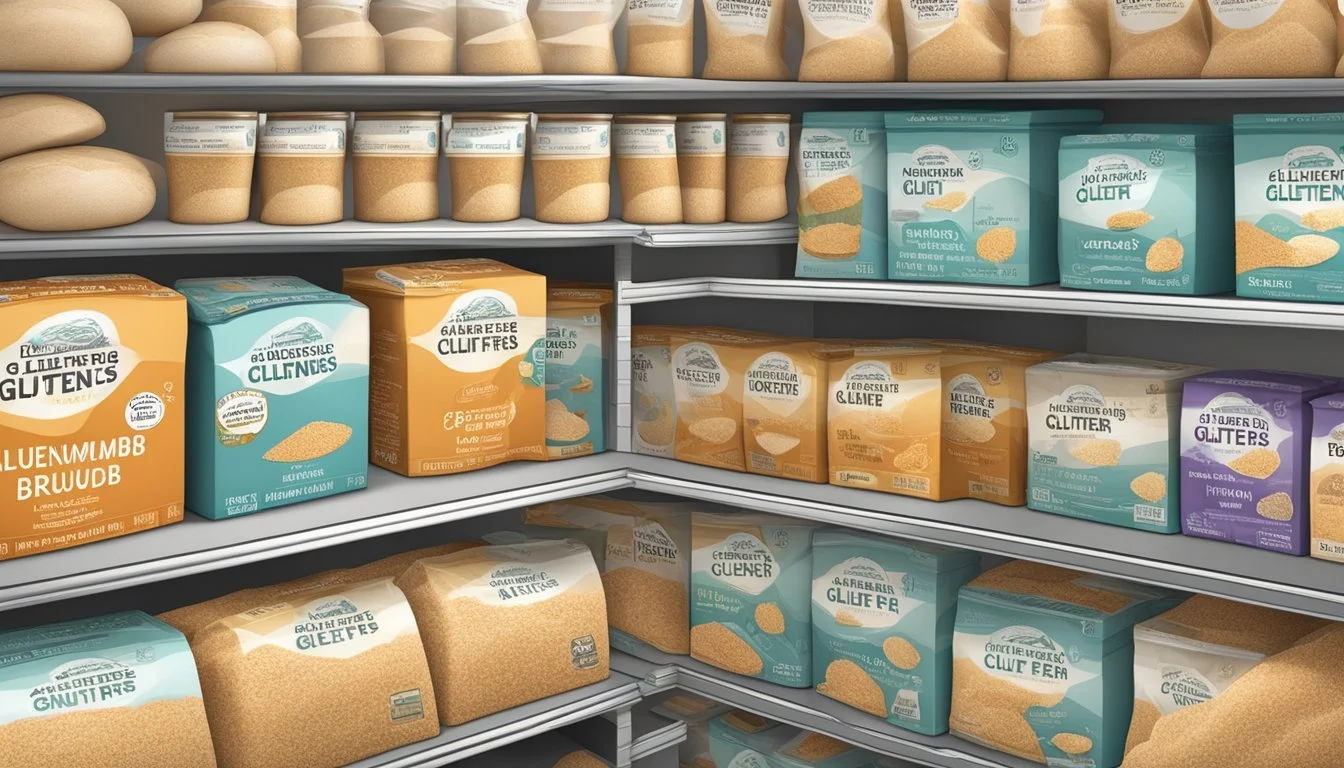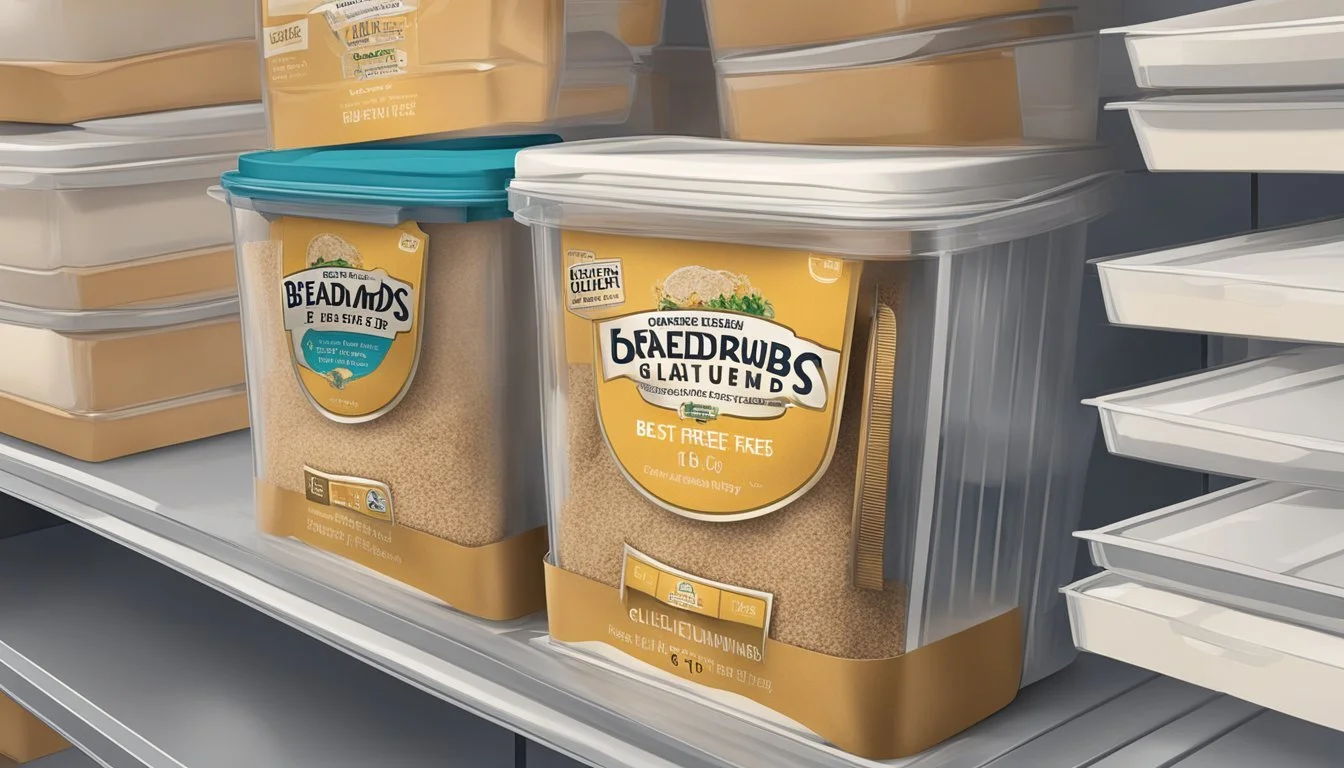How Long Do Gluten-Free Breadcrumbs Last?
Shelf Life and Storage Tips
Gluten-free bread (What wine goes well with bread?) crumbs serve as an essential component in many dietary-restricted kitchens, providing a versatile solution for breading, binding, and adding crunch to various dishes. Unlike their wheat-containing counterparts, gluten-free breadcrumbs are made from a variety of alternative flours and thus, may present different storage needs and shelf life considerations. The shelf life of gluten-free breadcrumbs can be significantly affected by how they are stored, which is a crucial piece of knowledge for anyone looking to maintain the freshness and usability of their breadcrumb supply.
Proper storage of gluten-free breadcrumbs is key to extending their usability. Typically, unopened packages stay fresh until the printed expiration date when kept in a cool, dry place. Once the package is opened, however, the countdown begins. Utilizing an airtight container or bag can help preserve their quality, as it guards against moisture and other environmental factors that can lead to spoilage. In many cases, refrigeration is not recommended as it can dry out the product, but freezing is a highly effective method to prolong the shelf life of breadcrumbs without sacrificing their texture or flavor.
Another aspect to consider is the signs of spoilage, such as an odd odor, mold, or the presence of pantry pests. The texture of breadcrumbs may also change, becoming rock-hard or forming wet clumps, both of which indicate that the breadcrumbs have gone past their prime. Consistently monitoring the condition of stored gluten-free breadcrumbs enables consumers to use them at optimal freshness, thereby ensuring the best possible outcome in gluten-free culinary endeavors.
What Are Gluten-Free Breadcrumbs?
Gluten-free breadcrumbs serve as a celiac-friendly alternative in cooking and breading applications, maintaining the desired texture without the gluten found in traditional wheat-based bread.
Defining Breadcrumbs and Their Gluten-Free Variant
Breadcrumbs are small fragments of dry bread used to provide texture and bulk in various culinary applications. Their gluten-free variant is crafted to exclude gluten, a protein found in wheat, barley, and rye. This makes them suitable for those following a gluten-free diet due to celiac disease or gluten sensitivities.
Ingredients Typically Found in Gluten-Free Breadcrumbs
The ingredients for gluten-free breadcrumbs begin with gluten-free bread, which typically includes a blend of rice flour (how long does rice flour last?), tapioca flour, and potato starch. Spices and seasonings are added to enhance flavor, mirroring the taste profiles found in traditional breadcrumbs. Gluten-free panko breadcrumbs (how long do panko breadcrumbs last?) may also include additional binding agents to mimic the distinctive light, airy texture of their wheat-based counterpart.
Common ingredients include:
Rice flour
Tapioca starch (how long does tapioca starch last?)
Potato starch
Xanthan gum (how long does xanthan gum last?) (as a binding agent)
Herbs and spices for seasoning
Comparison to Traditional Breadcrumbs
Gluten-free breadcrumbs are designed to be a direct substitute for traditional breadcrumbs, with a focus on replicating the texture and taste. While traditional breadcrumbs are derived from wheat bread, the gluten-free version uses a blend of different flours and starches. Gluten-free panko breadcrumbs aim to mimic the light, crispy texture of traditional panko while remaining safe for those avoiding gluten.
Making Gluten-Free Breadcrumbs at Home
Creating homemade gluten-free breadcrumbs is a resourceful way to use leftover bread and can be a cost-effective alternative to store-bought options. They can be tailored to specific tastes with various seasonings and stored for future use in recipes.
Recommended Gluten-Free Breads for Homemade Breadcrumbs
The best homemade gluten-free breadcrumbs start with the right type of bread. Gluten-free white bread, especially those that are 100% whole grain, is often preferred due to its neutral flavor and its ability to mimic the consistency of traditional breadcrumbs. Bread brands like Canyon Bakehouse or Udi's are recommended, as they typically avoid unwanted additives and provide a good source of fiber. It's important to choose bread that is either stale or nearing the end of its freshness for optimal drying and crumbling.
Step-By-Step Process for Creating Breadcrumbs
Preparation Time: Approximately 15 minutes Baking Time: 15 minutes
Preheat the oven to a low heat setting, around 300°F (150°C), to ensure even drying without burning.
Crumbling the Bread: Break up the bread into small, even pieces and spread them in a single layer on a baking sheet.
Drying in the Oven: Bake the bread pieces until they are completely dried out, which typically takes about 15 minutes depending on the oven and breadth thickness. It is vital to occasionally turn or stir the pieces for uniform drying.
Creating the Crumbs: Once cooled, transfer the bread to a food processor and pulse until the desired breadcrumb texture is achieved.
Storing for Future Use: Place the homemade gluten-free breadcrumbs in an airtight container and store them either in the cupboard for a short period or in the freezer for extended freshness.
Customizing Flavor with Seasonings and Herbs
After pulverizing the bread into crumbs, enhancing the flavor is achievable by adding a variety of seasonings and herbs. A simple homemade blend can include garlic powder, (how long does garlic powder last?) onion powder (how long does onion powder last?), dried parsley (how long does dried parsley last?), and oregano. For a more piquant Italian twist, incorporate Italian seasoning. These aromatic additions not only elevate the taste but also make the homemade breadcrumbs versatile for different recipes. To integrate the flavors thoroughly, seasonings should be mixed with the breadcrumbs before storage.
Storing Gluten-Free Breadcrumbs for Freshness
Proper storage is crucial for maintaining the freshness and extending the shelf life of gluten-free breadcrumbs. Utilizing airtight containers, choosing the appropriate storage location, and recognizing when breadcrumbs have spoiled are key to ensuring their quality and safety.
Airtight Containers and Their Importance
Airtight containers are essential to preserving the freshness of gluten-free breadcrumbs. They prevent the ingress of moisture, which is the primary cause of spoilage. Glass jars or plastic containers with tight-fitting lids are excellent choices. It is important to ensure that the breadcrumbs are completely cool before sealing them in containers to prevent any condensation, which can lead to mold growth.
Freezer vs. Pantry Storage
When deciding between freezer or pantry storage, consider how quickly the breadcrumbs will be used. For long-term storage, the freezer is the best option as it can significantly extend the shelf life. To defrost, simply take out the needed quantity and allow it to come to room temperature before use. For short-term storage, keeping the airtight container in a cool and dry pantry will suffice. However, room temperature storage will usually maintain freshness for a shorter period.
Indicators of Spoilage and Shelf Life Expectancy
Be aware of the shelf life expectancy and indicators of spoilage:
Shelf life: Typically, gluten-free breadcrumbs stored in the pantry will last for a period of 1 to 2 weeks. When stored in a freezer, their shelf life can be extended up to several months.
Spoilage indicators: Detecting spoilage involves checking for an odd odor, mold, and any change in texture, such as wet clumps or a rock-hard feel. Taste should not be used as a testing method for spoilage due to the potential for foodborne illness.
By following these guidelines, gluten-free breadcrumbs can be stored effectively to maintain their quality and extend their usability.
Using Gluten-Free Breadcrumbs in Recipes
Utilizing gluten-free breadcrumbs in cooking can enhance both the flavor and texture of a variety of dishes. This component is versatile, providing a crispy crust for meats and a delightful topping for baked dishes.
Breaded Chicken and Other Meats
Gluten-free breadcrumbs are an essential ingredient for achieving a crisp, golden crust in breaded chicken recipes. Using them in meatballs or meatloaf can also contribute to a moist and tender end product. Careful seasoning can play a pivotal role in flavor enhancement, making gluten-free options like almond flour and coconut flour desirable for their subtle, nutty taste and the ability to meld seamlessly with various herbs and spices.
Casseroles and Toppings
When it comes to casseroles such as mac and cheese or cauliflower cheese, gluten-free breadcrumbs can be sprinkled on top to provide a pleasant contrast in texture. As a topping, they offer a satisfying crunch that complements the creaminess of these dishes, transforming them from simple to extraordinary with minimal effort.
Alternatives to Breading with Gluten-Free Options
Sometimes, a recipe may require a thicker crust or a different flavor profile. In such cases, alternatives to traditional breadcrumb breading can be employed. A blend of gluten-free breadcrumbs with almond flour or coconut flour can offer a unique take on classic dishes, resulting in a lighter and more distinct crust that caters to those with dietary restrictions without compromising on taste or texture.
Common Questions and Additional Tips
This section addresses frequently asked questions, important nutritional information, and offers guidance to enhance the texture and flavor of gluten-free breadcrumbs.
FAQs on Gluten-Free Breadcrumbs
How long do gluten-free breadcrumbs last? Gluten-free breadcrumbs, when stored properly in a sealed container and kept in a cool, dry place, can last for up to 4-6 months. If stored in the freezer, they can last even longer.
Can celiac sufferers use gluten-free breadcrumbs in cooking? Yes, gluten-free breadcrumbs are a safe alternative for individuals with celiac disease as they do not contain wheat, barley, or rye.
Nutritional Information and Dietary Considerations
Dairy-Free and Vegan Options: Look for brands that do not include parmesan cheese or any dairy products for a vegan or dairy-free diet.
Nutritional Content: Gluten-free breadcrumbs may vary in nutritional value, with some being made from almond flour or coconut flour offering low carbohydrate alternatives.
Tips for Achieving the Perfect Texture and Flavor
For Crispy Texture:
Use a parchment-lined sheet pan to ensure even baking.
Bake at a low temperature to dehydrate the bread thoroughly without burning it.
For Airy Crumb:
Pulse the gluten-free bread in a food processor until reaching a fine, airy consistency.
Flavor Enhancements:
To mimic the taste of Italian breadcrumbs (how long do italian breadcrumbs last?), consider adding dried herbs like oregano or basil to the mixture.
Toasting the breadcrumbs lightly can also add a complex, nutty flavor to the final product.
Where to Buy and Types of Gluten-Free Breadcrumbs
When considering gluten-free breadcrumb options, consumers have two primary choices: store-bought versions available at many retailers and homemade recipes that can be tailored to individual tastes and needs.
Store-Bought vs. Homemade Options
Store-bought gluten-free breadcrumbs are widely accessible and convenient for those who prefer ready-to-use products. They often come in several types, including traditional bread crumbs and crispy panko-style. Homemade breadcrumbs offer a customizable alternative, allowing individuals to control the ingredient quality and flavor profile. Both options have varying shelf lives, dependent on the ingredients and preservatives used.
Recommended Brands and Grocery Store Options
At a grocery store, shoppers can typically find a range of gluten-free breadcrumb options. Some of the more popular choices include:
Gluten-Free Panko Breadcrumbs: Known for their light, airy texture and crispy finish, often preferred for coatings and toppings.
Brands
4C Foods: Offers three certified gluten-free breadcrumb varieties made from rice flour.
Aleia's Gluten Free Foods: Provides non-GMO and certified gluten-free breadcrumbs, with a focus on seasoning blends and coatings.
For those with specific dietary needs beyond gluten-free, it is important to read labels carefully to ensure products meet all of their requirements. Homemade alternatives, while requiring more time to prepare, can be more cost-effective and personalized to taste.







